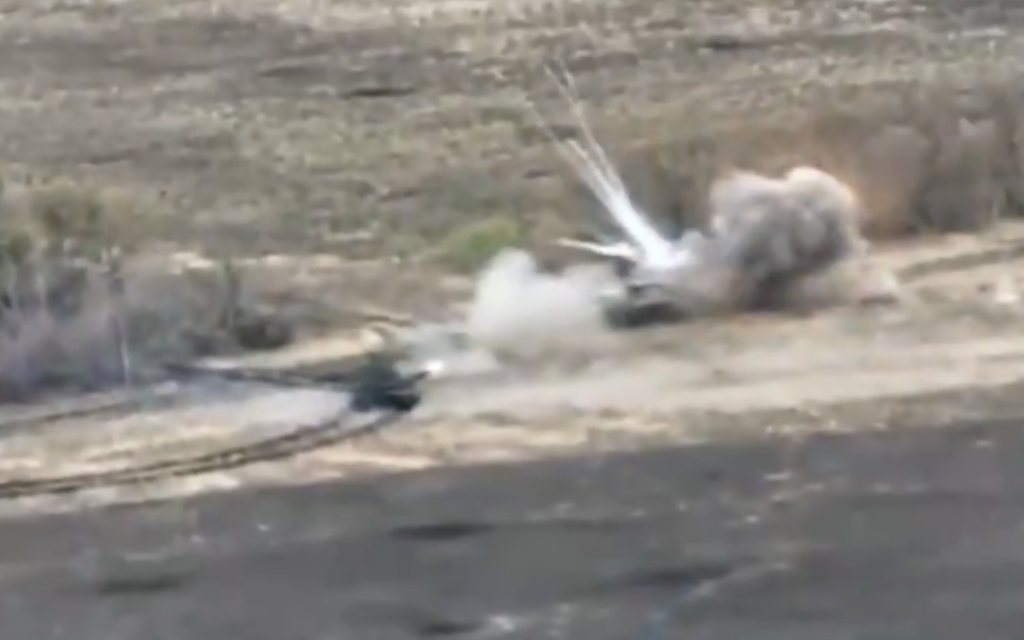Russian Troops Mistakenly Thought the Ukrainian Tank was Their Own.
Others are reading now
The ongoing war in Ukraine is marked by chaos and confusion, especially as both Ukrainian and Russian forces use similar Soviet-era equipment, making friend-or-foe identification challenging.
Incoming Russian Vehicle
Ukrainian forces often rely on flags or visual markings — such as the “Z” symbol painted by Russian forces — to differentiate allies from adversaries.
Drone pilots assist by relaying real-time data to platoon commanders and tank crews, sometimes making the difference between life and death on the battlefield.
In a recent clash, this confusion played a critical role when a Ukrainian T-64 tank identified an approaching Russian BTR-80/82 armored personnel carrier, according to WP.
Also read
The Ukrainian crew realized the incoming vehicle was Russian, while the BTR crew seemingly mistook the T-64 for a friendly unit. The T-64 fired from close range, hitting the BTR, which subsequently crashed into nearby trees. Given the intensity of the impact from the 125mm shell, it’s likely the entire BTR crew did not survive.
A Catastrophic Explosion
The T-64, first introduced in the 1960s, forms the backbone of Ukraine’s armored forces. Known for its advanced technology, the T-64 was complex to produce and maintain, prompting the Soviet Union to develop the simpler T-72 model.
Post-Soviet Ukraine, however, continued to improve the T-64, making it a mainstay of its tank forces, particularly through the Malyshev Factory in Kharkiv, which produced multiple upgraded versions such as the T-64BM Bulat and T-64BW 2022.
Modern Ukrainian T-64 variants boast advanced “Knife” reactive armor, which surpasses the older Kontakt-1 and Kontakt-5 systems. This armor is highly effective against anti-tank munitions, using shaped charges to neutralize armor-piercing rounds.
Since 2017, T-64 tanks have also been fitted with upgraded fire control systems and thermal imaging, giving them an edge in nighttime and low-visibility combat against T-72 and T-80 models below the B3 and BVM versions.
Despite these advancements, the T-64’s design has vulnerabilities. The automatic loading system stores ammunition within the hull without separating it from the crew compartment.
This design means that any penetrating hit risks a catastrophic explosion, which can result in the tank’s turret being violently ejected.



